As the twenty-first century unfolds, a dominant world view that grew out of long-ago scientific discoveries is proving inadequate to meet current global challenges. This world view, or paradigm, is slowly losing ground to an emerging view as a result of ongoing scientific explorations. Paradigm transitions create confusion since different groups of people hold conflicting views of reality during the same time period.
Paradigms
A paradigm is a world view that serves as a framework around a person’s perceptions of their experiences. It’s a way of looking at the world that includes a set of assumptions about reality. A paradigm helps us explain the past, understand what’s happening in the present, and sets expectations of what could happen in the future. Typically large groups of people participate in a paradigm, and widespread paradigms hold sway for long periods of time, changing slowly as a new way of seeing the world emerges. We call the paradigm that has been dominant for centuries but is now eroding the industrial paradigm.
The Industrial Paradigm
We’re in the last stage of the industrial era, which was framed by a particular set of assumptions, rules, and regulations: together they formed the industrial paradigm. At present, the world is emerging from this old era into a new age for which there is no agreed-upon name. Perhaps it’s too early to name it, because its real identity is still uncertain. Some want to call it the age of technology, especially because of the advent of AI. We call it the age of relationships, since its framework is traceable to new understandings showing how important it is to pay attention to the way everything is related to everything else.
The industrial era grew out of scientific discoveries that opened the way for new social structures and inventions as early as the sixteenth century. These in turn helped humanity move beyond the agrarian world of our distant ancestors.
Early on, as the industrial era gradually replaced the agrarian age, difficult challenges ensued as people moved from farms to cities, where new work beckoned. Rules and regulations emerged to ensure things ran smoothly in the industrial paradigm and to protect its framework. The rules applied everywhere; they were based on the key assumptions guiding the paradigm, and they expressed its linearity. They took the form of laws, regulations, and policies at every level.
As the industrial era evolved, central ideas guided it: a major focus was on the individual, and emphasis was placed on achieving success. Progress became a ubiquitous goal. The rules, structures, assumptions, and beliefs characterizing this period led to prosperity and well-being at first. As time went on, manufacturing flourished and paved the way for technological advances, which have continued building on each other and are now bringing new waves of ‘progress’ to our society.
Ironically, the great, great, great “grandchildren” of the first inventions of this era pushed industrial operations out of the limelight, making the original paradigm somewhat obsolete. But its ideological bulwarks—its structures, rules, regulations, goals, and assumptions—remain in place, like zombies still holding sway over civilization. Laws, organizational structures, the assumption that progress follows a linear pathway into the future—these are aspects of the industrial paradigm that resist change.
Individualism and progress, coupled together, seemed at first to be principles beneficial to society. People were motivated to design new machines and create new methods to accomplish tasks with greater and greater efficiency. Their inventions made lives more comfortable, longer lasting, more productive, and more enjoyable. But now these principles are taking on malignant characteristics. In an agrarian society, life is the highest value. People grow food to support life, and they follow the natural rhythms. The industrial paradigm subverted that value system, and money and power rose to the top as the most important goals an individual could achieve. Other values lost importance, even that of life itself, as strange as that may seem. As a result, money became a god.
The industrial paradigm is the context in which money rose to the top of the values pyramid; its trappings set the perfect stage for that to happen. And the power of money, with its compelling attraction, blinds people to the destructive ramifications of their behavior as they pursue its glitter. Everything about the industrial paradigm prods us to aim for individual success, to acquire wealth and power—in fact, to become wealthier and more powerful than anyone else. Those goals are inherent in the set of principles and rules that form the guidelines for this era, particularly at its end. No one who’s absorbed these precepts can be blamed for following them. It’s not a black and white, linear situation. We’ve known many good and generous people who could also be hell-bent on acquiring wealth and power and rising to the top. It’s what our society taught them. What they were NOT taught is to think about the ramifications of their behavior.
The industrial paradigm also bequeathed to us a mental model widely accepted today as a way to make sense of the world. In this mindset, we focus on separate items in our environment and pay less attention to the way they exist in relation to one another and to the ways they’re interconnected and communicate with each other. The focus on separate items leads to fragmentation: we’ve often called the industrial paradigm the fragmentation paradigm because this characteristic is so pronounced and important. It’s an out-of-balance perspective. We need both: to understand what items are and to know as well how they function together.
The Emerging Paradigm
Technology, with its focus on connectivity and relationships, is driving the industrial paradigm into obsolescence. Cell phones, the internet, and even AI, are all about relationships. We are now in a period of waxing and waning, all at the same time. New ways of thinking and inventions keep running head on into old structures, eventually working around them and creating new ones. People whose assumptions about reality are rooted in the industrial era and those whose minds inhabit emerging views are at odds—they live in different worlds. Confusion abounds, especially as technology plunges ahead.
Although a new paradigm hasn’t jumped out of a box completely formed and ready to be quickly accepted, one is slowly emerging, based on discoveries in the new scientific arenas of quantum, chaos, and complexity theories. These discoveries and the assumptions they give rise to inspire hope. They point to the need to restore the value of life and the well-being of all living systems as the highest value, which is bound to happen over time—if there is time. Our need for a turn-about is urgent: a centuries-long transition will culminate too late.
Over time, the industrial era developed into a paradigm aligned with values that grew so powerful they became destructive, leading to breakdown everywhere, in groups of all sizes.
Breakdown is the inevitable result of the industrial era’s value structure. Individualism’s all-out competition separates us from each other and causes polarities everywhere: it pits people and resources against one another. “Rugged individualism” overrides the needs of community. It’s all about individuals fighting to get a bigger piece of the pie for themselves.
A teacher-friend once told us she was worried about boys—she said they’re hurting—and she wanted to find ways to help them. We’re sure she expected our compassionate support for this idea, but instead we said, “What about the girls? They’re hurting too. What about everybody? Everybody’s hurting. If we try to solve one problem and not the other, we create polarity, with a fight for resources and a failure to solve any problems. Addressing smaller problems separately leads to polarization and often unintended consequences. We have to solve the underlying problem behind all this hurting. We have to help everybody.” She saw our point and agreed.
Polarity is a major product of the industrial paradigm; it operates in tandem with fragmentation. Everything gets separated into smaller parts and they compete, resulting in polarity. The paradigm necessitates this. So here we are, entangled in a web of the remaining rules, regulations, and fragmented structures of industrialization, guided by its assumptions and problem-solving methods, and we wonder why there’s endless warfare on every level? We fight over rights, resources, ideologies, religions, philosophies, money, politics—you name it. Why? We can’t blame it on the devil—the paradigm made us do it.
Until we can work our way out of this old mindset and embrace a set of values that prioritizes life and the well-being of all living systems, our problems will continue to metastasize until they engulf us.
We want to stress again that nobody is at fault for any of this, whether for creating the problems or because of their ineptitude in solving them. People are doing the only thing they know how to do. This concept is hard to accept because we want to blame others when we see them acting out in ways that seem to make everything worse. It’s challenging to keep remembering that everyone is doing their best within the limitations of their world view and the beliefs they’ve been taught. But it’s largely true: even the people you most vehemently disagree with are for the most part trying to do what they think will work when they are engaged in problem-solving.
Moving from Either/Or to Both/And
Since we are well-trained in polarity, it can be easy to see this paradigm transition period in terms of either/or: either the industrial paradigm or the relationship paradigm. That view sees the world in static terms, but our world is a dynamic place, not static. In a dynamic world where everything is situated in a web of interconnection, change happening to one element ripples out through the web affecting everything else. Aspects of the industrial paradigm’s view will remain, but will also experience change as they react to other changes taking place, and as new scientific discoveries move out in all directions prompting changes upon changes.
In this changing and expanding world, as we try to live our lives and make daily decisions, two bywords will become increasingly useful. The first is context. We must continually expand our views of situations to include the context in which they occur, since their context is affecting each of those situations. This requires that we distance ourselves from a situation in order to see its position within its environment. As we distance and disengage, our view becomes clearer. The second is relationship. How is a particular situation related to others? What patterns run through those relationships? Again, we distance ourselves, this time from the myriad details, rising above them to look for patterns. In doing so, we free ourselves from being overwhelmed by the mass of details, and our view is clarified. Using these two tactics helps us find resolution to problems in the midst of a paradigm shift in a complex, chaotic world.
By Jo Vanderkloot and Judy Kirmmse



